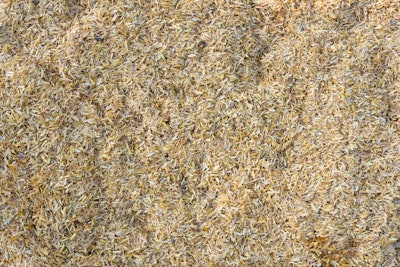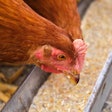
Pathogens, including African swine fever virus, may be transmitted via livestock feed, but there isn’t enough data to establish regulations to address the risk, said Cassandra Jones, Ph.D., associate professor at Kansas State University, in her presentation at the Feed and Pet Food Joint Conference, in St. Louis. In the absence of protective rules, feed mills can take certain steps to avoid the potential for feed ingredients to act as a vector for microscopic threats. The main advice Jones had for avoiding pathogens in feeds was to avoid high-risk ingredients from high-risk countries.
Some of these pathogens that may be transmitted by feed include viruses, such as foot-and-mouth disease, porcine epidemic diarrhea (PED) virus and African swine fever (ASF). Prions may be carried in feed ingredients, such as the one responsible for bovine spongiform encephalitis. Salmonella, Listeria and other bacteria too may be able to hitch a ride on feed.
How to avoid pathogens in feed ingredients
To avoid pathogenic hitchhikers on livestock feed, Jones advised against using high-risk ingredients from high-risk countries. For example, in some countries, roads serve as impromptu threshers. When corn and rice are left on the roadway to dry, passing vehicles break open their husks or free kernels from cobs. At the same time, those vehicles' tires transfer the microorganisms to the grains from everywhere their tires have rolled. Rice hulls and corn cobs processed in this manner thereby become prime candidates for pathogen transfer if used in feed recipes.
Along with road-dried cobs and husks, certain feed ingredients share characteristics that make them more likely to transmit dangerous microorganisms than others, she said.
Characteristics of materials that tend to harbor pathogens:
- high protein (especially natural protein)
- porcine based
- relatively large surface area
What that means is that soybean meal carries a higher risk than whole soybeans, for example, because the proteins in the meal are more exposed to infection due to the greater surface area of the ground product, she said.
Feed ingredient buyers should also consider large-scale geographic influences, such as countries with active disease outbreaks, she said. The location of facilities with diseased animals relative to feed ingredient production sites affects pathogen transmission risks on a regional scale. Agricultural practices and packaging also play a role in determining the risk particular nations or regions pose.
Relative risks of pathogens in feed ingredients
On the other hand, some ingredients present little risk of spreading a pathogen, Jones said. Feed mill managers have little to fear from synthetic amino acids sold in individual, single-use bags.
Despite the potential for feed ingredients to spread disease, Jones said the risk was relatively small. While evidence suggests feed can transfer disease, Jones believes the transportation of the feed may have shared culpability with the feed materials themselves.
“Most Salmonella comes from people,” she said. “The highest-risk entry points remain workers’ feet.”
View our continuing coverage of the African swine fever outbreak.


















